#constance crawford
Explore tagged Tumblr posts
Text

Henry ‘Chips’ Channon: The Diaries (Vol. 1), 1918-38, entry for 7th March 1923
—
Wednesday 7th March
I have reached a very advanced age!¹ I was pleased to receive a cheque for £100 from father. I danced at Lady Crawford’s.² They built a gallery to house the Dutch pictures inherited from Lady Wantage. The primitifs have all been moved to the dining room. They have a glorious collection of pictures ... and children too. There are about seven of the latter, all enormous and stupid except Balniel,³ who is a shy, reserved long-nosed rare creature whom I knew well at Oxford. He is knowledgeable about pictures. Lady Crawford looms like a Medusa and is vast. She wears unsuccessful frocks in dullish colours, which are a bad background for her heavy massive jewels. She always looks untidy, if not dirty, which Lord Crawford, the most charming of men, frankly is.
—
1. It was his 26th birthday, or as far as his friends were concerned, his 24th.
2. Constance Lilian Pelly (1873–1947), married in 1900 David Alexander Edward Lindsay (1871–1940), by courtesy Lord Balcarres from 1880 to 1913, when he succeeded his father as 27th Earl of Crawford and 10th Earl of Balcarres. He served in Lloyd George’s Cabinet.
3. David Alexander Robert Lindsay (1900–75), by courtesy Lord Balniel from 1913 to 1940, when he succeeded his father (vide supra) as 28th Earl of Crawford and 11th Earl of Balcarres.
#chips channon#channon diaries#1923#constance crawford#david edward crawford#david robert crawford#happy 126th birthday chips!!#🕰️
2 notes
·
View notes
Text
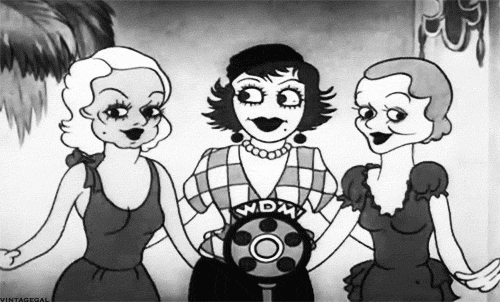
Jean Harlow, Joan Crawford and Constance Bennett 1933 Disney short
#jean harlow#joan crawford#constance bennett#vintage#animation#cartoon#short#disney#old hollywood#classic hollywood#1930s
1K notes
·
View notes
Photo

what type are you? (1935)
kay francis: sophisticated joan crawford: dancing lady alice faye: dynamic blonde gloria stuart: athletic claudette colbert: siren anna sten: glamorous russian irene dunne: society type constance bennett: langurous blonde mary pickford: ever youthful
#1930s#mary pickford#irene dunne#kay francis#joan crawford#anna sten#gloria stuard#alice faye#claudette colbert#constance bennett
128 notes
·
View notes
Text
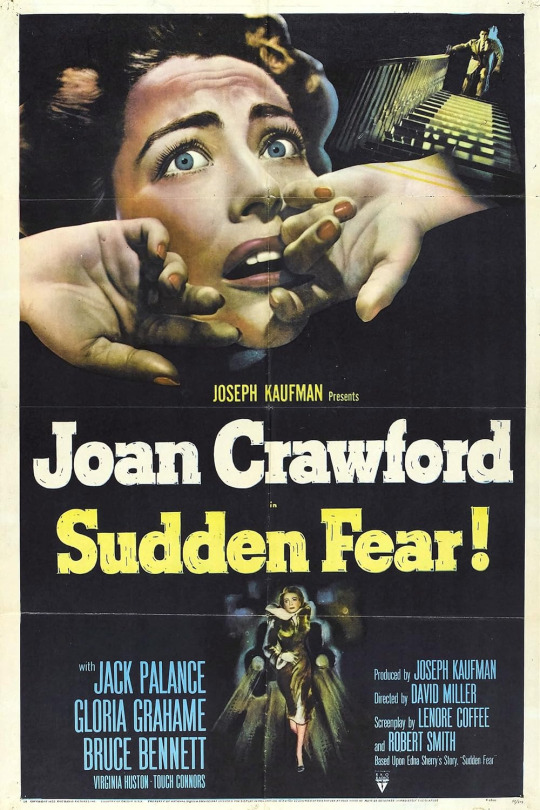
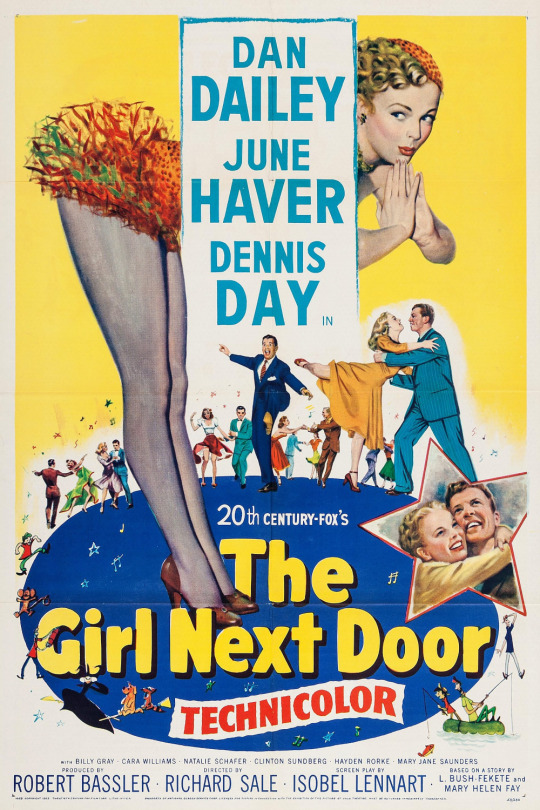
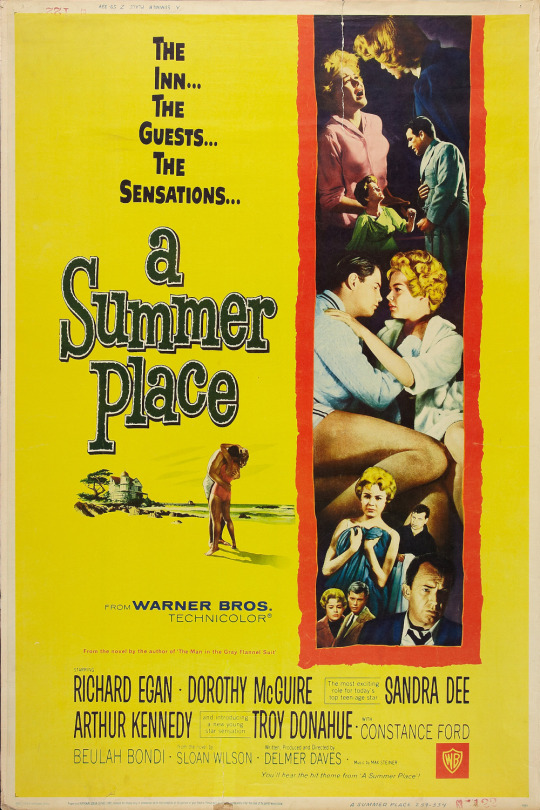
Haterating and hollerating in the 1950s:
SUDDEN FEAR (1952): Inventive but unsatisfying thriller about a middle-aged playwright and heiress (Joan Crawford) who discovers that her new husband (Jack Palance) and his ex-girlfriend (Gloria Grahame) are plotting to do away with her, and decides to concoct her own elaborate trap for the would-be killers, which doesn't go as planned. Palance is well-cast, walking an interesting line between charm and sociopathy, and the film gives Crawford one of her better '50s roles, but the script fails to pay off its own clever plot twists while allowing Crawford too many opportunities for her customary histrionics — particularly in a pair of over-the-top dream/fantasy sequences and in a crucial scene where the heroine has to express, without dialogue, that she's having second thoughts about her own plan. The finale, while undeniably tense and featuring striking nighttime cinematography by Charles B. Lang Jr., also feels like it belongs in a completely different movie.
THE GIRL NEXT DOOR (1953): Bright, attractively staged Fox musical (with two animated interludes) about the burgeoning romance between a successful stage star (June Haver) and her handsome new next-door neighbor (Dan Dailey), a comic strip artist and widower with a young son (Billy Gray) who's none too happy at this new competition for his father's attention. Haver and Dailey are great, and their easy repartee is very appealing. It's also interesting to see Dennis Day outside of his more familiar role as Jack Benny's idiot stooge. However, Billy Gray's character never quite rings true; there's no real reason for Joey to dislike the charming, good-humored Jeannie other than childish jealousy, so the story depends on his eventually getting over it rather than on Jeannie winning him over, which might have been more fun.
A SUMMER PLACE (1959): Overwrought Delmer Daves adaptation of a Sloan Wilson novel about two one-time lovers (Richard Egan and Dorothy McGuire), now unhappily married to others (Constance Ford and Arthur Kennedy), who decide to divorce their respective spouses so they can finally get married, only to face endless angst because their college-age kids (Sandra Dee and Troy Donahue) are also in love, in A Society That Just Doesn't Understand™. The story might have been considered daringly blunt by the standards of 1958–59, but to modern eyes, it succeeds mostly in putting the "turgid" in "dramaturgy." The script and direction are so unrelentingly heavy-handed that the actors seem like they're mining coal, with only Constance Ford (whose character is an unmitigated bitch) allowed to be anything other than laboriously tormented.
#movies#hateration holleration#sudden fear#joan crawford#jack palance#the girl next door#dan dailey#june haver#dennis day#a summer place#sloan wilson#delmar daves#sandra dee#troy donahue#richard egan#dorothy mcguire#constance ford#sloan wilson is best known as the author of the man in the gray flannel suit#a novel from which the tv show mad men borrows quite shamelessly#(it was made into a popular but so-so movie with gregory peck)
7 notes
·
View notes
Text
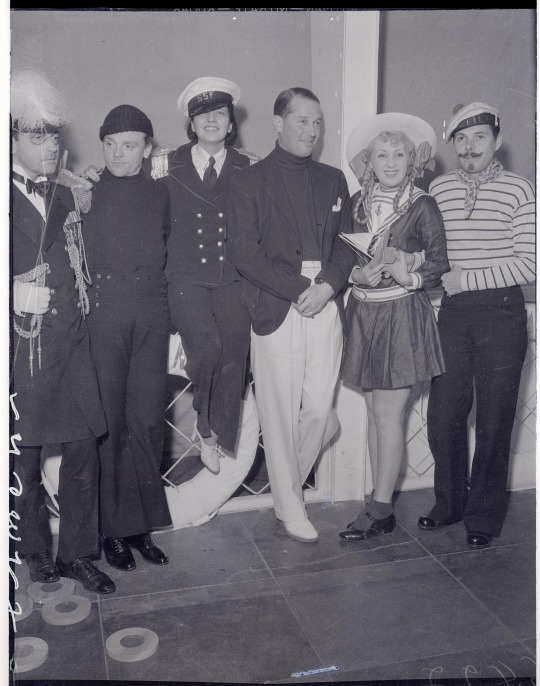
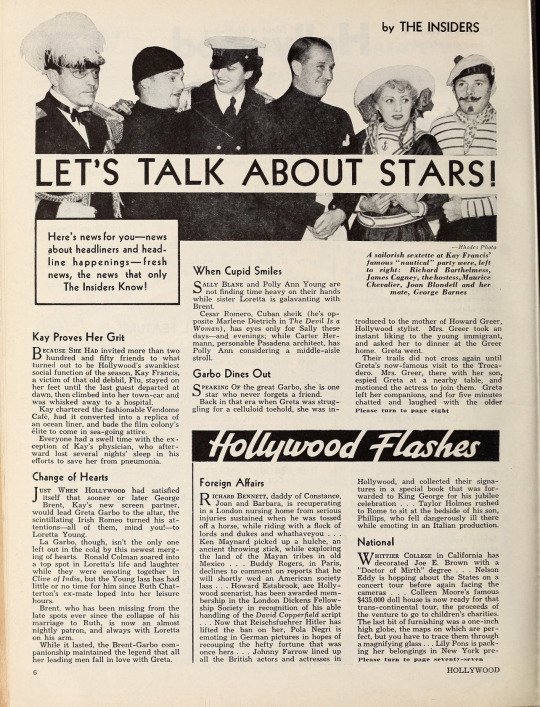
James Cagney, Kay Francis, Maurice Chevalier, Joan Blondell, and George Barnes attending a theme party hosted by Kay Francis herself
“Kay Francis gave a Nautical Night for her friends of cinema-land the other night, and for the occasion converted the Vendome Cafe here, into a "quarterdeck" for dancing and general revelry. And it is recorded in the Daily Press, that, as a result of the party, Miss Francis contracted an attack of influenza, or La Grippe, that compelled her to postpone a trip eastward. Here we see the hostess with some of her guests, in costume. Left to right: Jimmy (James) Cagney; Kay Francis; Maurice Chevalier, Joan Blondell and George Barnes.”
#(at kay’s party)#james cagney#kay francis#joan blondell#maurice chevalier#george barnes#(on mag page)#greta garbo#marlene dietrich#constance bennett#joan crawford#barbara stanwyck#george brent#loretta young#ronald colman#nelson eddy#(other tags)#old hollywood#vintage#vintage magazine#1930s#30s#30s fashion#old films#old movies#30s movies#1930s vintage#1930s style#1930s movies#pre code hollywood
21 notes
·
View notes
Text

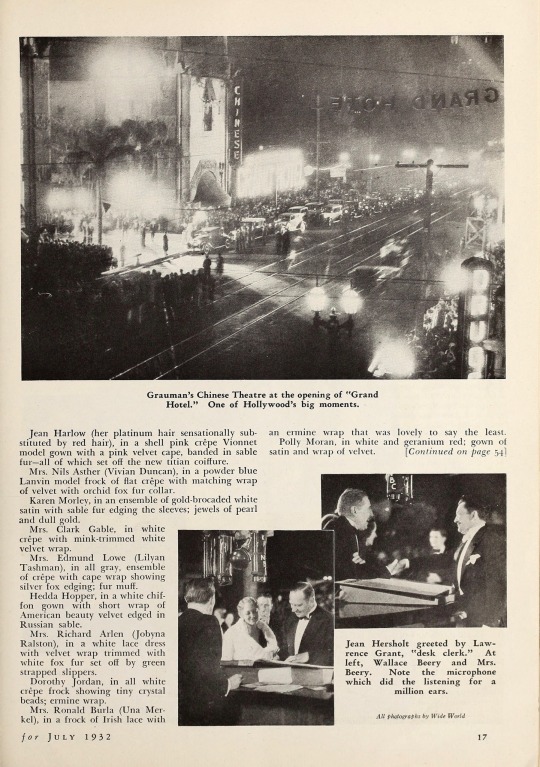

Silver Screen Magazine, July 1932.
#1930s#silver screen magazine#grand hotel 1932#joan crawford#clark gable#lew ayres#lola lane#joan bennett#constance bennett#marlene dietrich#lilyan tashman#una merkel#wallace beery#jean hersholt#norma shearer#jean harlow#douglas fairbanks jr.#cecil b. demille#maureen o'sullivan#anita page#helen twelvetrees#polly moran#bebe daniels#genevieve tobin#marian marsh#jobyna ralston#dorothy jordan#old hollywood#old movie stars
12 notes
·
View notes
Text
Movie Classics Magazine, May 1934

Interview by Jack Grant with George Hurrell.
Found in Trouble in Paradise blog.
5 notes
·
View notes
Text

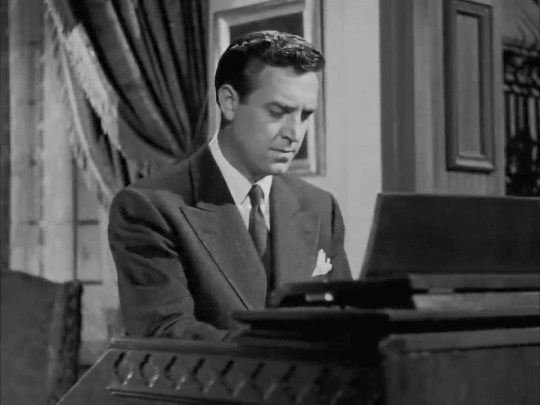
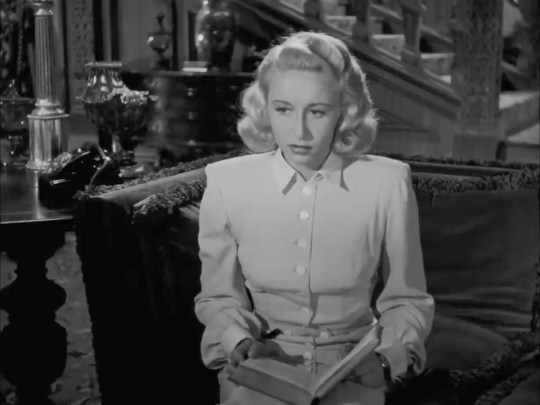

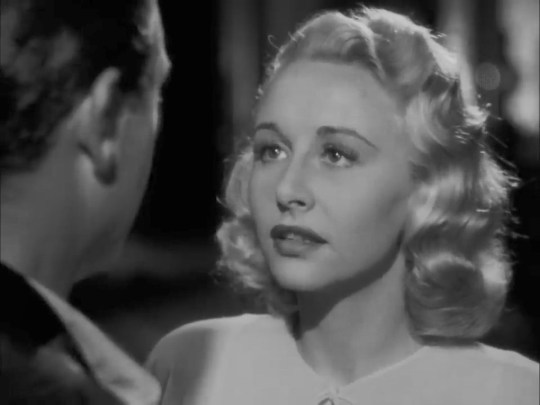

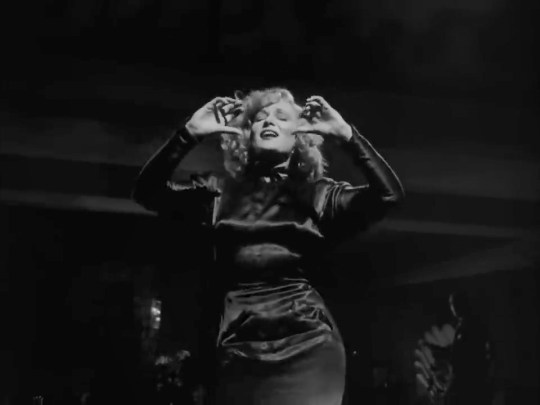

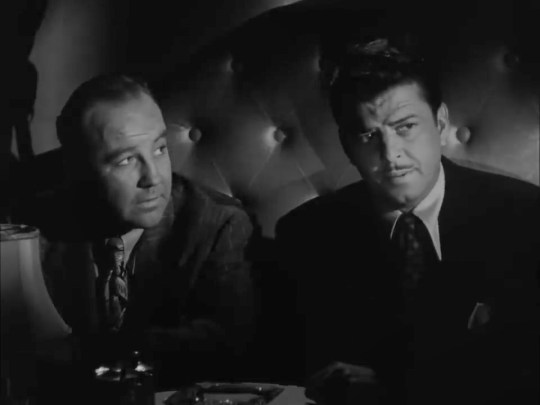
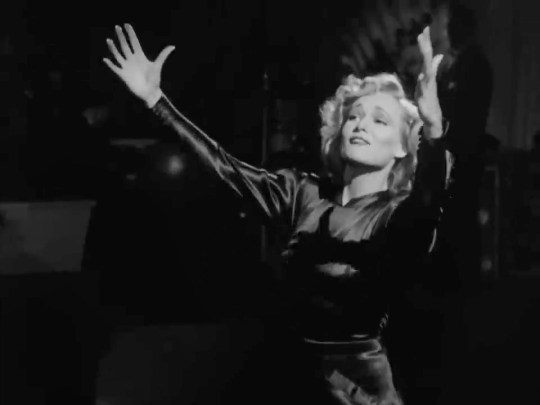
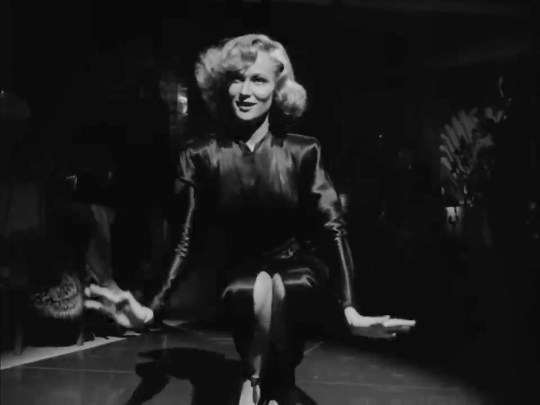
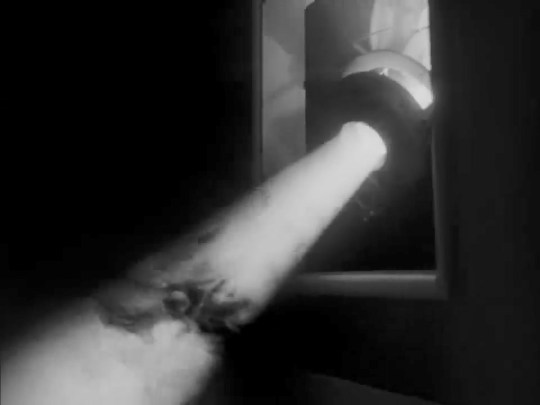
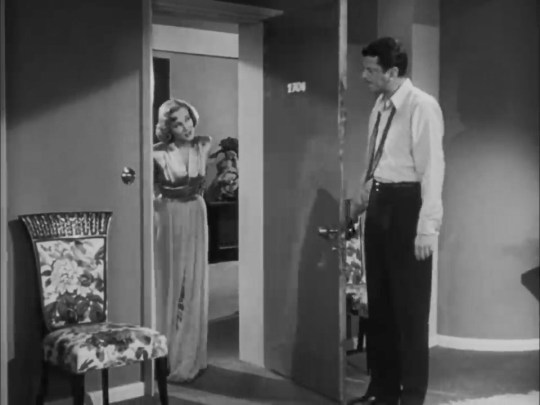
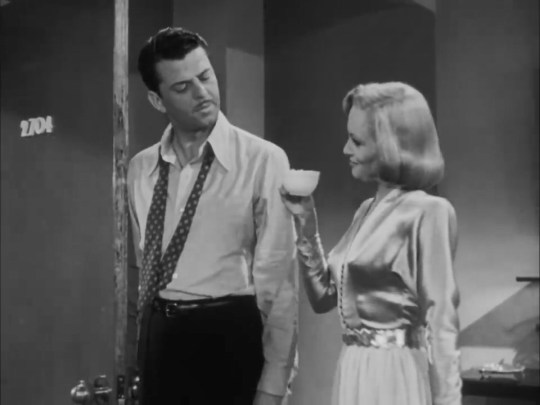

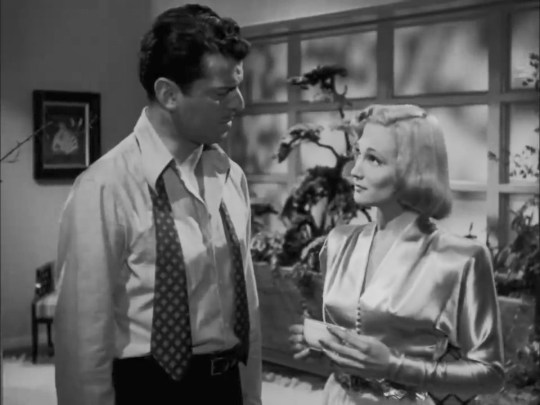
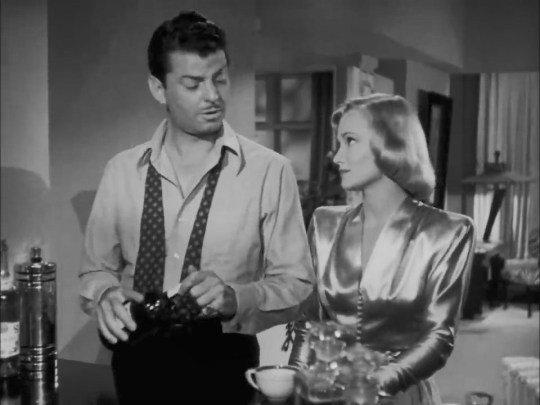



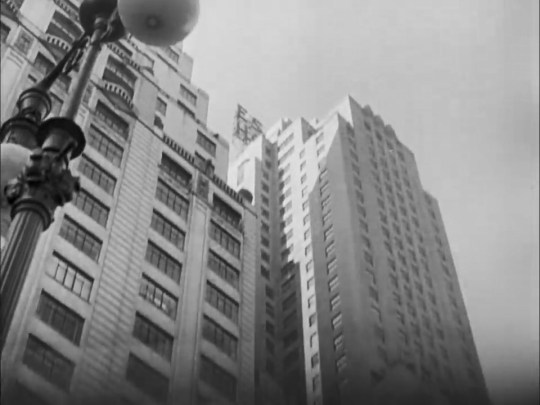
#the flame#john h. auer#1947#blanche yurka#constance dowling#vera ralston#robert paige#john caroll#broderick crawford#inland empire
3 notes
·
View notes
Text
Black Angel

One of the crown princes of film noir, Dan Duryea, gets an acting showcase in Roy William Neill’s BLACK ANGEL (1946, TCM, YouTube). As an alcoholic pianist and composer who keeps falling for the wrong woman, he has a rare sympathetic role. He gets some terrific drunk scenes, but also has some beautifully delicate moments as he falls for leading lady June Vincent.
Vincent’s husband is spotted leaving the apartment of Duryea’s estranged wife, singer Constance Dowling, and convicted of her murder because she was blackmailing him. The reason for the blackmail is never stated, though it’s implied (this is under the Production Code, after all) that they had had a fling. With the police (headed by homicide chief Broderick Crawford) convinced he did it, Vincent takes it upon herself to find the real culprit. She enlists Duryea’s help, so they get jobs performing at Peter Lorre’s nightclub, because Duryea had seen him going into his late wife’s building before the murder. It’s all highly improbable but also highly entertaining.

The film represents a fascinating combination of good work and some of Hollywood’s worst conventions. Neill and cameraman Paul Ivano create rich, expressive visuals with a strong emphasis on the way décor reflects character, from Vincent’s homey suburban house to Dowling’s over-decorated apartment and Lorre’s sleek, modernistic nightclub. The script — based on a Cornell Woolrich novel loosely adapted by Roy Chanslor, who later wrote the novels “Johnny Guitar” and “Cat Ballou” — is rife with details that reflect or comment on character and in some cases point to the twist ending. If you listen closely and possess a degree of cultural literacy, he actually cues you in to whodunnit. And the performances are all top-notch, which makes it sad that strong actors like Vincent and Dowling didn’t have more prominent careers.

But then Hollywood throws in some absurd touches by modern standards. Dowling sings with her own voice, but Vincent is dubbed with a rich contralto that’s no match for her higher-pitched speaking voice. And though you can see there’s only a small jazz ensemble behind her at the club, the accompaniment is positively symphonic. Given the Production Code’s attitude toward divorce and the 1940s construction of woman, Vincent can’t entertain the idea of dumping her unfaithful husband once she’s saved him, even with the more attractive and supportive Duryea waiting in the wings. Couldn’t they have at least cast a younger and better-looking actor as the husband to provide some visual reason for her dogged devotion? Her devotion is just a given, though the husband is so poorly defined and the blackmail so pointless (since Vincent won’t leave him even after finding out he cheated), he’s almost a McGuffin. The one thing that slipped under the censors’ noses was Lorre’s characterization as the club owner. Although he’s revealed to have had a secret daughter, who apparently doesn’t know he exists, and seems to be enamored of Vincent (but then, SPOILERS), he's also rather close to the club’s bouncer (former boxer Freddie Steele), who consistently lights his cigarettes for him. Makes you wonder.

#film noir#roy william neill#cornell woolrich#dan duryea#june vincent#constance dowling#peter lorre#broderick crawford#freddie steele#roy chanslor#paul ivano
1 note
·
View note
Text
pin-striped-soup
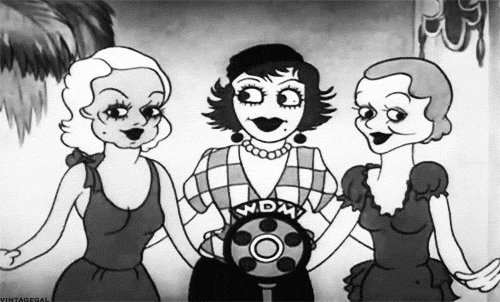
Jean Harlow, Joan Crawford and Constance Bennett in Mickey’s Gala Premier (1933)
#Jean Harlow#Joan Crawford#Constance Bennett#WDM#Mickey’s Gala Premier#1933#1930s#Radio#Animation#Vintage Animation#pin-striped-soup
34 notes
·
View notes
Text
I want to say that Edmund's central problem is that his principles are not firm. He HAS the principles. He knows what's right and he wants to do what's right. But he talks himself around them. And to some extent it's his inherent niceness--a desire to like and be liked-- that pushes him to do it.
He knows the play is a bad idea. But he's convinced to do it anyway by the slight change in circumstances. (And on this one I'd really have to go back to see what I think his actual motivation is. I'm not sure if I'd say the error arises from self-righteousness/self-importance-- I can fix it, I know better, I can make it okay-- or justifying a desire to spend time with Mary, or not wanting the group to not like him/wanting to think better of them and what they're doing, or a combination of all of that).
He would disapprove of Julia and Maria's interactions with Henry but he wants to believe the best of all of them so he in trying to give them the benefit of the doubt he's blinded to the reality of the situation. And in wanting to 'keep the peace' and think well of everyone he neglects his role as an older brother, and forms a poor understanding of nearly everyone's character.
He explains away Mary's faults (or is blinded to them entirely) because he's in love with her.
And he initially approves Fanny's rejection of Henry, but then tries to talk her into accepting him because he wants to believe that Henry (in part as an extension of Mary) is a great guy and because he's got a picture in his head of a happy little future where he's married to Mary and they hang out all the time. So he can't accept what Fanny's criticisms of Henry and he can't hold onto his initial instinct of defending Fanny's decision.
In a way, constancy is a central concern of a the book. On side we have Fanny who is consistent in her affections all the way through (her loyalty both to William and to her love for Edmund) and who even when she struggles to voice them is firm in her principles. Even when she starts to believe that Henry may have changed, she doesn't really waver in her decision to reject him. On the other side we have Henry who is fickle. He flirts with Maria and Julia, and then jumps to Fanny. His plans are constantly changing. He starts to change for Fanny (but even there he's being driven by what SHE thinks not genuine principles of his own) but can't maintain that and flips back to Maria at the first temptation. And Edmund is squarely in the middle, torn between Fanny's influence and the Crawfords'. Edmund first has to be forcibly confronted with his errors and then respond by growing up and learning that constancy.
#mansfield park#edmund bertram#disclaimer: i have only read the book once and am still working through my understanding of the book
82 notes
·
View notes
Text
Iconic female characters if their arcs were like Nihal’s
Catherine Earnshaw:
Heathcliff never returns. She doesn’t marry Edgar either and instead stays living with her brother. The book ends there.
The March sisters:
Easy. The second volume of Little Women never exists.
Snow White:
She is paranoid that her stepmother will attempt to kill her but it never happens. She never leaves the palace.
Çalıkuşu Feride:
After learning of Kamran’s betrayal she faints instead of running away to Anatolia to become a teacher. The book ends there.
Emma Woodhouse:
Harriet marries Mr. Knightley. Emma stays with her hypochondriac dad. The book ends there.
Fanny Price:
She accepts to marry Henry Crawford but Crawford still proves himself to be a cad and runs away. Edmund marries Mary Crawford. Fanny continues her life being oppressed by Mrs. Norris and the book ends there.
Merricat:
Instead of Merricat setting fire to Charles’s room, Constance understands Charles’s villainy on her own and ousts him. Merricat, Constance and Uncle Julian return to their old way of life.
You can add more characters.
(This is obviously not a criticism of Nihal’s arc, hers is literally one of my favorite stories. But you also get why both pop culture and literary critics preferred Bihter’s story).
@princesssarisa @vickythestrange @struttingstreets @winged-cries
#aşk ı memnu#aşk-ı memnu#nihal#wuthering heights#little women#snow white#çalıkuşu#emma#jane austen#mansfield park#we have always lived in the castle
13 notes
·
View notes
Text

Northknot Costume Contest 2024 → Aurelie Watson, Tanner Fray & Wolfgang Watson ( @mcnstercus & @immcrtalsx & @fairywilds )
2nd: Alectrona Elidi, Jonathan Henderson & Felicity Elidi-Henderson 3rd: Callista Albrecht Crawford, Zachary Crawford & Marina Albrecht Crawford
The rest of the runner-ups are below!
Theodore Sinclair & Ulyana Zhang
Elwyn Sisters
Alicia Monroe & Chase Carr
Adelina De Salazar & Hecate Black
Kristin Henderson & Parker Henderson
Constance Fernández-Renway & Edith Li
2 notes
·
View notes
Text

Summer 2000 Mixtape.
Bustah Rhymes f. Raekwon & Ghostface Killah & Roc Marciano “The Heist”
Lord Tariq & Peter Gunz “This Cold World”
Phat Kat “Dedication To The Suckers”
Aboriginals, The “Number Theory”
De La Soul f. Redman “Oooh”
Royce Da 5’9” “Boom”
Guiro f. DJ Spinna “Solevision”
Dilated Peoples “Work The Angles” RMX
Slum Village “Raise It Up”
Kool G Rap & RZA “Cakes”
Ruff Ryders f. Snoop Dogg & Scarface & Jadakiss & Yung Wun “World War III”
Planet Asia & Talib Kweli “Don’t Let Up”
Yak Ballz “Nasty Or Nice”
M.O.P. “Ante Up”
Slum Village “Climax (Girl Shit)”
Mack 10 f. E-40 “Can’t Stop”
Big L “Holdin’ It Down”
Barber Shop Emcees “Money, Music, And Women”
Lonnie Liston Smith & The Cosmic Echoes “Aspirations”
Galt McDermott “Ripped Apart By Metal Explosions”
Les McCann “Valarta”
Richard “Groove�� Holmes “Onsaya Joy”
Bob James “Caribbean Nights”
Lonnie Liston Smith & The Cosmic Echoes “Expansions”
Steve Davis “It’s All Because She’s Gone”
Mahavishnu Orchestra “Resolution”
Randy Crawford “Street Life”
Earth, Wind & Fire “Brazilian Rhyme (Beijo Interlude)”
Lonnie Liston Smith & The Cosmic Echoes “Colors Of The Rainbow”
Andreas Ammer & FM Einheit Sensation Death
Damage Manual “Sunset Gun”
Apoptygma Berzerk “Eclipse”
Front Line Assembly “Fatalist” (Rhys Fulber RMX)
Subconscious label Wild Planet
Caspar Brotzmann & FM Einheit Merry Christmas
Assemblage 23 “Bi-Polar”
Invisible label Drug Test Volume I
Andreas Ammer & FM Einheit Deutsche Krieger
Christoph De Babalon If You’re Into It I’m Out Of It
DJ Rap “It’s Good To Be Alive” (Deep Dish RMX)
Stereolab “Metronomic Underground” (Wagon Christ RMX)
Primal Scream “Kill All Hippies”
Squarepusher “Tequila Fish”
Hanin Elias In Flames 1994-1999
Underworld “Bruce Lee”
Genaside “The Genaside Will Not Be Televised”
Kraftwerk “Expo 2000”
Squarepusher “Central Line”
southpacific Constance
Harry Pussy Ride A Dove
Relapse Records label Japanese / American Noise Treaty
#omega#music#playlists#reviews#personal#Harry Pussy#Squarepusher#Kraftwerk#Underworld#Hanin Elias#Primal Scream#Stereolab#Christtoph De Babalon#FM Einheit#Front Line Assembly#Lonnie Liston Smith#Les McCann#Bob James#Richard 'Groove' Holmes#Randy Crawford#Galt McDermott#Big L#Mack 10#Slum Village#Kool G Rap#Dilated Peoples#Phat Kat#Wu-Tang Clan
4 notes
·
View notes
Photo
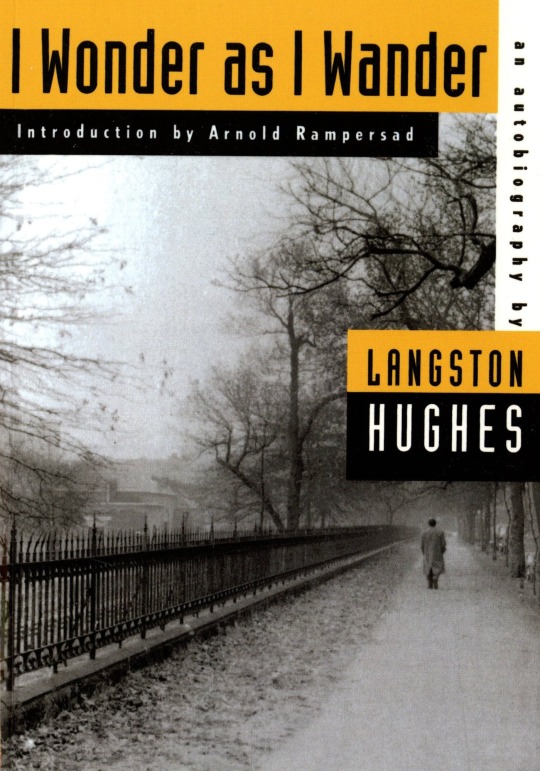
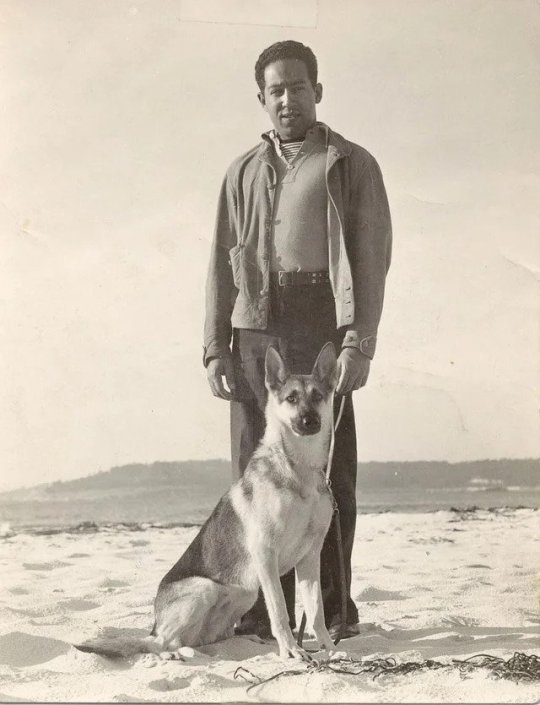
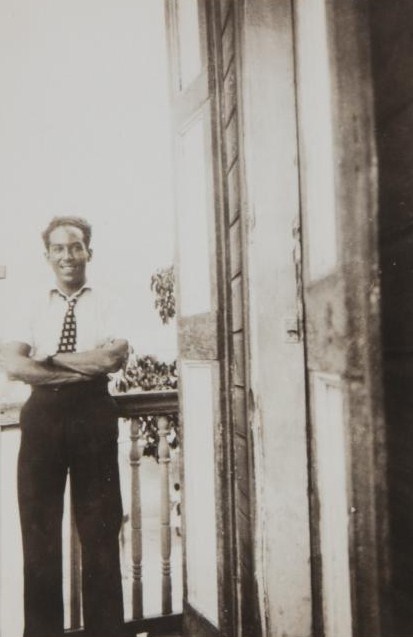

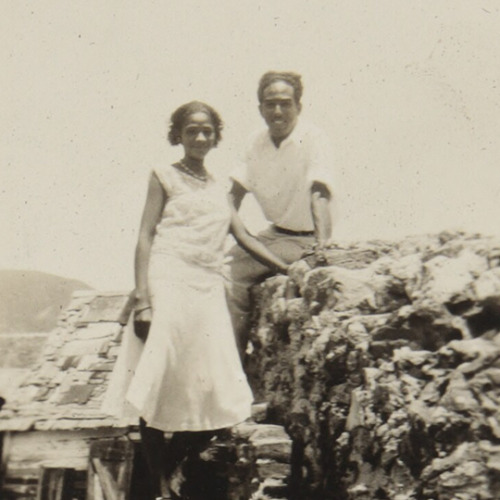
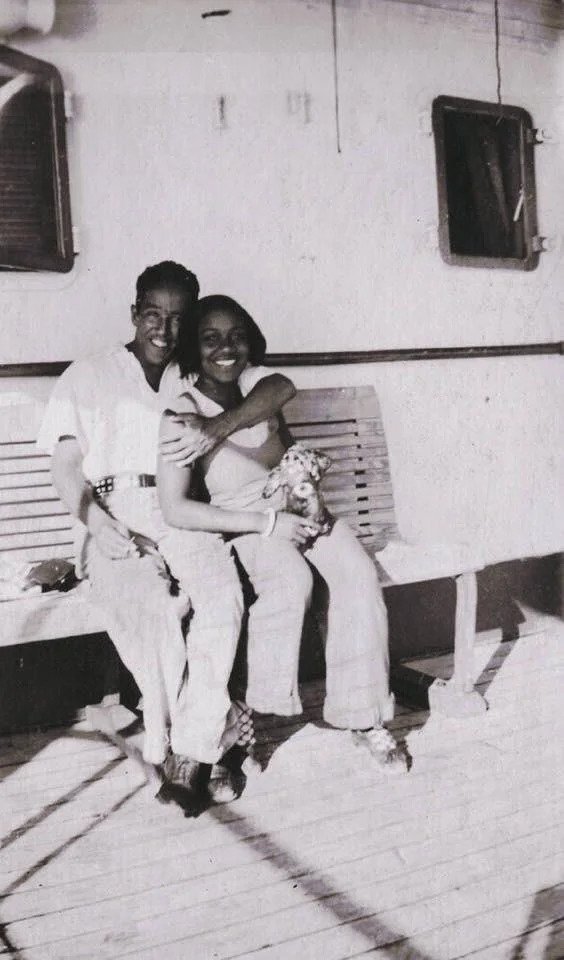

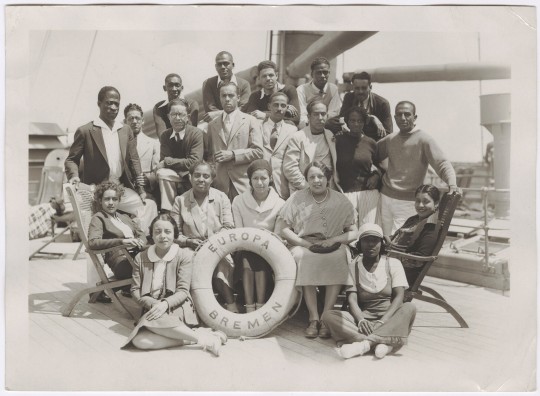
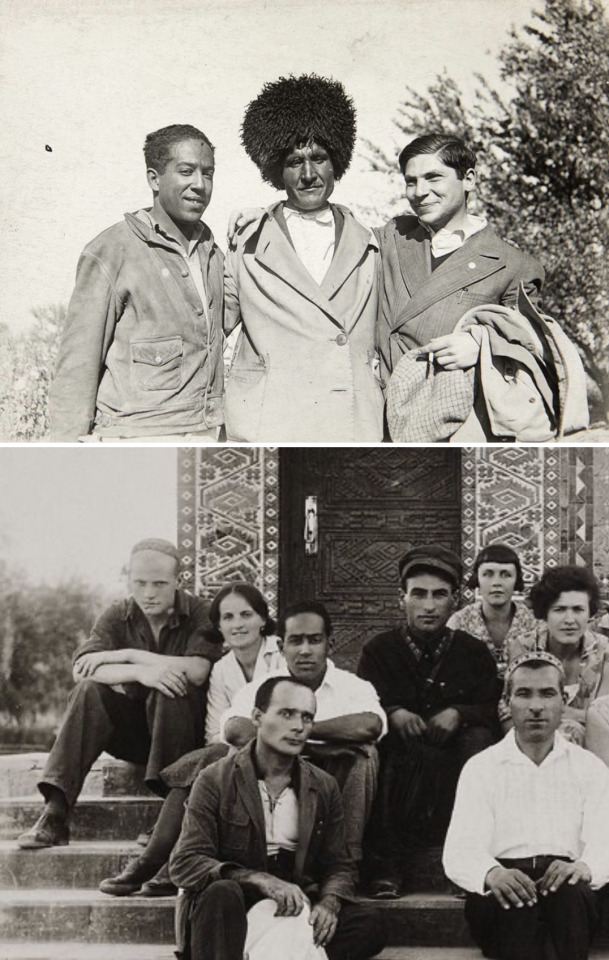
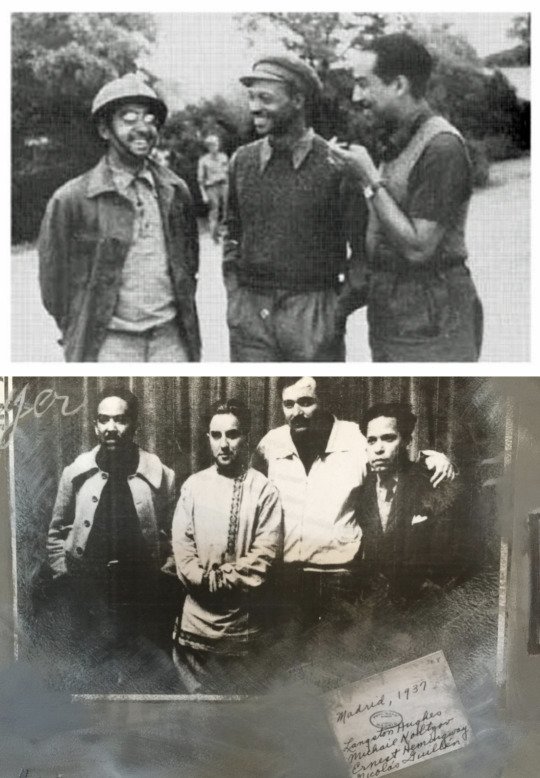
My Book Review
In his first memoir, The Big Sea, Langston Hughes unveils his self-portrait as a depressed, vulnerable young world traveler in his 20s in the 1920s, aiming to understand his family and sense of self against the barriers of society. His gift of words and will to finally be leads to his self-discovery, awakening, and budding friendships in the midst of examining the racial construct and class structures around him in various countries. I Wonder As I Wonder is a continuation of his wanderlust spirit around the world into the 1930s. Langston paints a portrait of societal structures and cultures around the world —Cuba, Haiti, Russia, Soviet Central Asia, Japan, Spain — (even witnessing dictatorships and the Spanish Civil War) and within the US. He makes his imprint as a gifted wordsmith during the The Great Depression, meeting new and some familiar faces along the way. Just as The Big Sea, I Wonder As I Wonder is a layered sensory book. You feel like you’re right there in the past as a curious world traveler, seeing through his eyes, taking field notes, witnessing the shaping of various countries and the way it translates to the daily lives of the people, and how it all compares/contrasts to today. It's funny that upon concluding this memoir, Langston still writes about wanting to be a writer: “But that is what I want to be, a writer, recording what I see commenting upon it, and distilling from my own emotions a personal interpretation.” The thought of doing while actually doing. Journeying through the preceding pages with him, you understand it's really his longing to make his passion a successful earning career in spite of barriers. He did indeed.
SN: The photos aren’t included in book, but are pivotal to the details in the book.
Langston Hughes with dog on beach at Carmel, California (1934)
The next 3 photos are Langston Hughes in Haiti (1931)
The next 2 photos are Langston Hughes and Dorothy West in route to Russia (1932)
The Russian film company Meschrabpom's "Black and White" film team on the SS Europe (1932). Front row from left: Mildred Jones, Louis Thompson, Constance White, Katherine Jenkins, Sylvia Garner, Dorothy West, Mollie Lewis. Middle row from left: Wayland Rudd, Frank Montero, Matt Crawford, George Sample, Laurence Alberga, Langston Hughes, Juanita Lewis, Alan McKenzie. Back row from left: Ted Poston, Henry Lee Moon, Thurston Lewis, Lloyd Patterson, Loren Miller
Langston Hughes and German journalist Arthur Koestler (far right) on a cotton kolhoy in Soviet Central Asia (1932)
Langston Hughes in Ashgabat (1932)
Thaddeus Battle, former student at Howard University and activist in the National Negro Congress, Bernard “Bunny” Rucker, and Langston Hughes on the battlefield in Spain (January 1938)
Langston Hughes, Soviet journalist Mikhail Koltsov, Ernest Hemingway, Cuban poet and journalist Nicolás Guillén in Madrid, 1937
#langston hughes#I wonder as I wander#dorothy west#lloyd patterson#arthur koestler#ernest hemingway#thechanelmuse reviews#book review
75 notes
·
View notes
Text
my favorite sims from my save 1/5 🤍
constance briggs / lillian snow-brewer / crystal / layla crawford




#magentahottie#simblr#sims 4#sims 4 cc#sims 4 maxis match#sims4#the sims#the sims 4#sims 4 custom content#the sims cc#ts4 wcif#wcif friendly#sim download#sim dump
3 notes
·
View notes